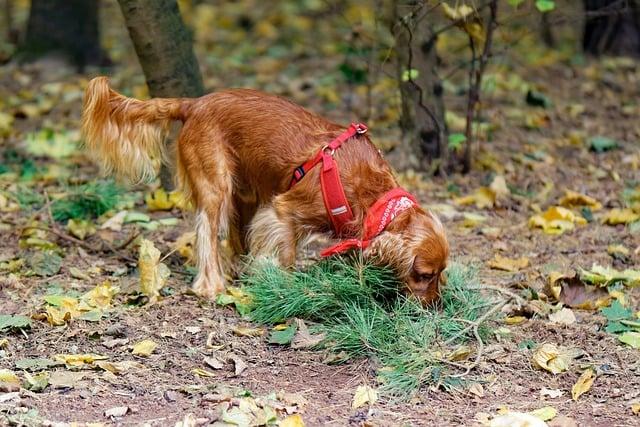In a quiet neighborhood, a young boy named Timmy loved playing outside. One sunny afternoon, he approached a seemingly friendly dog, eager to make a new friend. But as he reached out, the dog snapped, leaving Timmy shaken. This incident sparked a community discussion about dog bites, revealing that certain breeds, often misunderstood, are involved in more bites. Understanding dog behavior and responsible ownership is crucial. By educating ourselves, we can prevent such encounters and ensure a safer environment for everyone. Choose wisely; knowledge is your best defense.
Contents
- Understanding the Breeds Most Prone to Aggression and Biting
- Identifying Risk Factors That Contribute to Dog Bites
- Effective Strategies for Preventing Dog Bites in Your Community
- Choosing the Right Dog: Recommendations for Safe and Family-Friendly Breeds
- Q&A
Understanding the Breeds Most Prone to Aggression and Biting
When considering the breeds that are most prone to aggression and biting, it’s essential to understand that behavior is influenced by a combination of genetics, environment, and training. Certain breeds have been historically associated with aggressive tendencies, often due to their roles as working or guarding dogs. However, it’s crucial to remember that individual temperament can vary widely within any breed.
Some breeds frequently cited in discussions about aggression include:
- American Pit Bull Terrier: Known for their strength and loyalty, they can exhibit aggressive behavior if not properly socialized.
- Rottweiler: This breed is protective by nature, which can lead to aggressive behavior if they perceive a threat.
- German Shepherd: Often used in police and military roles, their protective instincts can sometimes manifest as aggression.
- Chow Chow: Known for their aloofness, they can be territorial and may bite if they feel their space is invaded.
It’s important to note that aggression is not solely a breed trait; it can be exacerbated by factors such as poor training, lack of socialization, and negative experiences. Dogs that are not exposed to various environments, people, and other animals during their formative months may develop fear-based aggression. Therefore, early socialization and consistent training are paramount in mitigating aggressive tendencies.
Moreover, responsible ownership plays a significant role in a dog’s behavior. Potential dog owners should consider not only the breed but also their own ability to provide the necessary training and socialization. Engaging with a professional trainer or behaviorist can help ensure that any dog, regardless of breed, is well-adjusted and less likely to exhibit aggressive behaviors. Ultimately, understanding the nuances of each breed and committing to responsible pet ownership can significantly reduce the risk of biting incidents.
Identifying Risk Factors That Contribute to Dog Bites
Understanding the underlying factors that lead to dog bites is crucial for prevention and safety. Various elements can contribute to aggressive behavior in dogs, and recognizing these can help mitigate risks. **Breed tendencies**, for instance, play a significant role; certain breeds are often perceived as more aggressive due to their physical strength and historical roles as guard or working dogs. However, it’s essential to remember that individual temperament varies widely within breeds.
Another critical factor is **socialization**. Dogs that have not been adequately socialized during their formative months may exhibit fear or aggression towards unfamiliar people or situations. Early exposure to different environments, people, and other animals can foster a well-adjusted pet. Conversely, a lack of positive experiences can lead to anxiety and defensive behaviors, increasing the likelihood of a bite incident.
The **owner’s behavior** also significantly influences a dog’s temperament. Dogs that are subjected to harsh training methods or inconsistent discipline may become fearful or aggressive. Additionally, owners who fail to recognize signs of stress or discomfort in their pets may inadvertently provoke a bite. Responsible ownership, including understanding canine body language and providing a stable environment, is vital in reducing the risk of aggressive incidents.
Lastly, **health issues** can contribute to a dog’s propensity to bite. Pain or illness can make even the most docile dog irritable and defensive. Regular veterinary check-ups are essential to ensure that a dog is healthy and free from conditions that could lead to aggression. By addressing these risk factors, we can create a safer environment for both dogs and humans, ultimately reducing the incidence of dog bites.
Effective Strategies for Preventing Dog Bites in Your Community
Creating a safer environment for both dogs and humans requires a proactive approach. One of the most effective strategies is to **educate the community** about dog behavior and body language. Understanding when a dog feels threatened or anxious can help prevent misunderstandings that lead to bites. Workshops and seminars can be organized to teach residents how to recognize signs of discomfort in dogs, such as growling, baring teeth, or stiff body posture. This knowledge empowers individuals to avoid situations that could escalate into aggression.
Another crucial strategy is to **promote responsible pet ownership**. Encouraging dog owners to socialize their pets from a young age can significantly reduce the likelihood of aggressive behavior. Community programs that offer training classes can help owners learn how to properly train and socialize their dogs. Additionally, advocating for spaying and neutering can help control the population of aggressive breeds, as studies show that unaltered dogs are more likely to exhibit aggressive tendencies.
Implementing **leash laws and designated dog areas** can also play a vital role in preventing dog bites. By ensuring that dogs are kept on leashes in public spaces, owners can maintain better control over their pets and reduce the risk of encounters with other animals or people. Designated dog parks can provide a safe space for dogs to interact and play, while also allowing owners to supervise their pets closely. Clear signage about rules and expectations in these areas can further enhance safety for everyone involved.
Lastly, fostering a sense of **community responsibility** is essential. Neighbors should be encouraged to look out for one another and report any aggressive behavior they witness. Establishing a neighborhood watch program focused on pet safety can create a supportive network where residents share information and resources. By working together, communities can cultivate an environment where both dogs and people feel secure, ultimately reducing the incidence of dog bites.
Choosing the Right Dog: Recommendations for Safe and Family-Friendly Breeds
When considering a new canine companion, it’s essential to prioritize safety and compatibility with your family. Certain breeds are renowned for their gentle nature and adaptability, making them ideal choices for households with children or other pets. **Golden Retrievers**, for example, are not only friendly and affectionate but also highly trainable, which can help mitigate any potential behavioral issues. Their patience and playful demeanor make them a favorite among families.
Another breed worth considering is the **Labrador Retriever**. Known for their loyalty and intelligence, Labs are incredibly social dogs that thrive in family environments. They are often described as gentle giants, making them perfect for families with young kids. Their eagerness to please and high energy levels mean they require regular exercise, which can be a great way for families to bond and stay active together.
For those looking for a smaller breed, the **Beagle** is an excellent option. Beagles are friendly, curious, and great with children, making them a wonderful addition to any family. Their playful nature and love for adventure can keep kids entertained, while their manageable size makes them suitable for various living situations. Additionally, Beagles are known for their loyalty and can form strong bonds with their families.
Lastly, consider the **Cavalier King Charles Spaniel**. This breed is known for its affectionate temperament and adaptability to different living environments. Cavaliers are gentle and friendly, making them perfect companions for families of all sizes. Their love for cuddling and playful spirit can bring joy to any household, ensuring that they not only fit in but also enhance the family dynamic.
Q&A
-
Which dog breeds are known to bite the most?
While any dog can bite, certain breeds are statistically more likely to be involved in bite incidents. Breeds such as Pit Bulls, Rottweilers, German Shepherds, and Dachshunds often appear in bite reports. However, it’s crucial to remember that a dog’s environment and training play significant roles in behavior.
-
What factors contribute to dog bites?
Dog bites can result from various factors, including:
- Lack of socialization: Dogs that are not properly socialized may react fearfully or aggressively.
- Fear or anxiety: A scared dog may bite as a defense mechanism.
- Protectiveness: Dogs may bite to protect their territory or owners.
- Health issues: Pain or illness can lead to unexpected aggression.
-
How can dog bites be prevented?
Preventing dog bites requires proactive measures, including:
- Proper training: Invest in obedience training to ensure your dog understands commands and social cues.
- Socialization: Expose your dog to various people, environments, and other animals from a young age.
- Supervision: Always supervise interactions between dogs and children or unfamiliar individuals.
- Health care: Regular veterinary check-ups can help identify and address any health issues that may affect behavior.
-
What should I do if a dog bites me?
If you are bitten by a dog, follow these steps:
- Clean the wound: Immediately wash the bite area with soap and water.
- Seek medical attention: Consult a healthcare professional to assess the injury and determine if further treatment is needed.
- Report the incident: Notify local authorities or animal control, especially if the dog is unvaccinated or a stray.
- Document the incident: Take photos of the injury and gather witness information for potential legal action.
understanding which dog breeds are more prone to biting can empower potential pet owners to make informed decisions. Prioritizing responsible ownership and training can foster safer interactions and a harmonious environment for all. Choose wisely!

大家好,我是彼得潘,專業的手法身體治療師。我喜歡探索和研究各種主題,並透過與人工智慧的合作分享專業、實用、有趣的文章。我們定期進行人工審核,以確保內容的準確性。如果您發現文章中有任何不準確的地方,請隨時與我們聯繫,我們會及時糾正。您可以透過 [email protected] 與我們聯繫。



